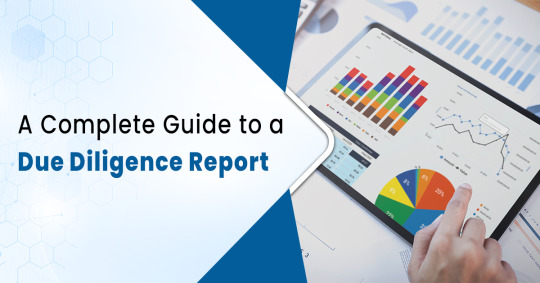Text
Know 8 Methods to Get Funds for Your Startup

Entrepreneurs must understand why they are seeking funding. Before approaching investors, owners need to have a clear financial and business plan. A startup may need funds for a few, or all the reasons stated below.
Working capital
Legal and consulting services
Product development
Prototype creation
Team hiring
Raw material and equipment
Licence and certifications
Marketing and sales
Office space and admin expenses
The three types of startup finance are equity financing, debt financing, and grants. Each has its own set of merits and demerits. The startup funding landscape has expanded beyond venture capital and angel investments. Today, there are numerous channels for startups to raise capital. We've discussed eight of them below.
Source Url : https://www.resurgentindia.com/know-8-methods-to-get-funds-for-your-startup
0 notes
Link
Employee Stock Ownership Plans (ESOPs) allow businesses to sell part of their company’s shares to employees. ESOPs are provided, in the main, to increase the retention rate in a firm. The idea here is to recognize and reward staff for their commitment and contribution to the company while ingraining a sense of ownership. Employee stock options can provide new possibilities for succession and estate planning, offering closely held businesses a vehicle for continued expansion.
0 notes
Link
Employee Stock Ownership Plans (ESOPs) allow businesses to sell part of their company’s shares to employees. ESOPs are provided, in the main, to increase the retention rate in a firm. The idea here is to recognize and reward staff for their commitment and contribution to the company while ingraining a sense of ownership. Employee stock options can provide new possibilities for succession and estate planning, offering closely held businesses a vehicle for continued expansion.
0 notes
Text
The Ultimate Guide to ESOP Valuation

Employee Stock Ownership Plans (ESOPs) allow businesses to sell part of their company’s shares to employees. ESOPs are provided, in the main, to increase the retention rate in a firm. The idea here is to recognize and reward staff for their commitment and contribution to the company while ingraining a sense of ownership. Employee stock options can provide new possibilities for succession and estate planning, offering closely held businesses a vehicle for continued expansion.
For a startup, ESOP valuation is crucial as the valuation of the organization in its entirety. Companies that offer ESOPs are required to provide ESOPs as an expense in their P&L statement. The provision impacts the determination of distributable profits for factors such as EPS calculation, dividend declaration, MAT payment, and profit determination for senior management remuneration.
Valuing ESOPs eventually translates into valuing the entire company. ESOPs need to be treated as an expense in the P & L statement.
The valuation is also important for issuing ESOPs over a vesting period (a specified amount of time working with the company) and calculating the required tax that employees must pay. In India, ESOPs are valued using a variety of approaches including income, asset, market, and fair value methods among others.
Source Url : https://www.resurgentindia.com/ultimate-guide-to-esop-valuation
0 notes
Link
Company valuation entails estimating the fair economic value of a company on the basis of several variables. Every business unit is assessed as part of the valuation process to determine its value as well as that of every department or subunit it may have. The valuation process requires a thorough examination of every aspect of the business including management, capital structure, the market value of the company's assets, and projected future profits. A company can be valued in a variety of ways – on the basis of its market cap, earnings multipliers, book value, etc.
0 notes
Link
The information gathered throughout the due diligence process is compiled in a due diligence report. The due diligence process, which entails a systematic investigation and analysis of all aspects of a proposed transaction, is carried out in order to improve investment decisions and mitigate risk for a company.
0 notes
Link
The information gathered throughout the due diligence process is compiled in a due diligence report. The due diligence process, which entails a systematic investigation and analysis of all aspects of a proposed transaction, is carried out in order to improve investment decisions and mitigate risk for a company.
0 notes
Link
The information gathered throughout the due diligence process is compiled in a due diligence report. The due diligence process, which entails a systematic investigation and analysis of all aspects of a proposed transaction, is carried out in order to improve investment decisions and mitigate risk for a company.
0 notes
Text
A Complete Guide to a Due Diligence Report

The information gathered throughout the due diligence process is compiled in a due diligence report. The due diligence process, which entails a systematic investigation and analysis of all aspects of a proposed transaction, is carried out in order to improve investment decisions and mitigate risk for a company. The due diligence process includes a comprehensive evaluation of an entity's financial viability in terms of assets and liabilities, a detailed analysis and verification of its operations, and a comprehensive examination and verification of its material facts regarding a proposed transaction. It also entails analyzing a company's financial records and comparing them over time with those of competitors to understand the financial status and performance of the company. Further due diligence process also takes into account all legal and tax aspects including that of the directors of the Company. The results of these investigations are then compiled in a report known as the due diligence report.
Why due diligence report is needed
Prior to making an acquisition, investment, business partnership, or taking a bank loan or other major decisions, due diligence is done to assess the value of the subject (a company or an entity) and identify major issues. The data gathered during this process is compiled into a report which clarifies how the business intends to increase profits. It presents a quick overview for understanding the situation at the time of purchase, sale, etc. Getting a clear picture of how the business will perform in the future is the ultimate goal of the report.
Source Url : https://www.resurgentindia.com/a-complete-guide-to-a-due-diligence-report
0 notes
Link
Money can be pumped into the system by broadly two modes. One is, by giving up equity/ownership stake in exchange for money and the other being debt. When large entities require funds towards expansion and other business activities, the most feasible option is fund-raising through debt.Would you as a lender leverage out all your funds into a single multi-crore deal? The chances are slim though, wherein the lenders would rather diversify their portfolio and in turn, team up along with multiple lenders to form a consortium. Large ticket loan deals are a great proposition in terms of returns. However, the risk attached with them is proportionately higher. To safeguard their interests, lenders often form a consortium or ‘syndicate’, and proceed with funding viable projects. Hence debt-syndication seemed the way forward. Lenders throughout history have practiced this norm. This practice gained momentum in our scenario sometime in post the millennium.
0 notes
Link
Indian Debt Market In India, the debt market is several times smaller than the equity market, while elsewhere it is just a multiple of the latter. One of the complex tools that have helped lessen this gap over the years is debt syndication. Be it SMEs, mid-corporates or large corporates, all those looking for customized financing solutions for capital intensive projects opt for it.
0 notes
Link
Money can be pumped into the system by broadly two modes. One is, by giving up equity/ownership stake in exchange for money and the other being debt. When large entities require funds towards expansion and other business activities, the most feasible option is fund-raising through debt.Would you as a lender leverage out all your funds into a single multi-crore deal? The chances are slim though, wherein the lenders would rather diversify their portfolio and in turn, team up along with multiple lenders to form a consortium. Large ticket loan deals are a great proposition in terms of returns. However, the risk attached with them is proportionately higher. To safeguard their interests, lenders often form a consortium or ‘syndicate’, and proceed with funding viable projects. Hence debt-syndication seemed the way forward. Lenders throughout history have practiced this norm. This practice gained momentum in our scenario sometime in post the millennium.
0 notes
Link
Money can be pumped into the system by broadly two modes. One is, by giving up equity/ownership stake in exchange for money and the other being debt. When large entities require funds towards expansion and other business activities, the most feasible option is fund-raising through debt.Would you as a lender leverage out all your funds into a single multi-crore deal? The chances are slim though, wherein the lenders would rather diversify their portfolio and in turn, team up along with multiple lenders to form a consortium. Large ticket loan deals are a great proposition in terms of returns. However, the risk attached with them is proportionately higher. To safeguard their interests, lenders often form a consortium or ‘syndicate’, and proceed with funding viable projects. Hence debt-syndication seemed the way forward. Lenders throughout history have practiced this norm. This practice gained momentum in our scenario sometime in post the millennium.
0 notes
Text
Is Debt Syndication the Way Forward for Borrowers availing Large Ticket Loans?

Money can be pumped into the system by broadly two modes. One is, by giving up equity/ownership stake in exchange for money and the other being debt. When large entities require funds towards expansion and other business activities, the most feasible option is fund-raising through debt.
Would you as a lender leverage out all your funds into a single multi-crore deal? The chances are slim though, wherein the lenders would rather diversify their portfolio and in turn, team up along with multiple lenders to form a consortium. Large ticket loan deals are a great proposition in terms of returns. However, the risk attached with them is proportionately higher. To safeguard their interests, lenders often form a consortium or ‘syndicate’, and proceed with funding viable projects. Hence debt-syndication seemed the way forward. Lenders throughout history have practiced this norm. This practice gained momentum in our scenario sometime in post the millennium.
Banks too, have formed syndicates and leverage out the risks and rewards attached with the large ticket loans amongst their contemporaries. A lead bank, heading the dais takes charge of the disbursal and due diligence. This entire process, of encapsulating multiple lenders into forming a syndicate and for disbursing a large ticket loan is referred to as Debt Syndication.
Source Url : https://www.resurgentindia.com/is-debt-syndication-the-way-forward-for-borrowers-availing-large-ticket-loans
0 notes
Link
The Ministry of Micro, Small, and Medium Enterprises (MSMEs) has developed a mechanism to give guarantees for loan facilities provided by qualified and registered scheduled commercial banks to borrowers in Micro, Small, and Medium Enterprises. The instrument through which the guarantee will be given is called the “Credit Guarantee Scheme for Subordinate Debt” (CGSSD). The initiative is called "Distressed Assets Funding - Subordinate Debt for Stressed MSMEs." As part of the economic package, the government declared a subordinated debt fund of Rs 20,000 crore which includes the distressed assets fund. The government would provide Rs 4,000 crore to the Credit Guarantee Fund Trust for Micro and Small Enterprises, which will provide partial credit guarantee support to banks so they may lend to MSMEs.
0 notes
Link
The information gathered throughout the due diligence process is compiled in a due diligence report. The due diligence process, which entails a systematic investigation and analysis of all aspects of a proposed transaction, is carried out in order to improve investment decisions and mitigate risk for a company. The due diligence process includes a comprehensive evaluation of an entity's financial viability in terms of assets and liabilities, a detailed analysis and verification of its operations, and a comprehensive examination and verification of its material facts regarding a proposed transaction. It also entails analyzing a company's financial records and comparing them over time with those of competitors to understand the financial status and performance of the company. Further due diligence process also takes into account all legal and tax aspects including that of the directors of the Company. The results of these investigations are then compiled in a report known as the due diligence report.
0 notes
Link
The Ministry of Micro, Small, and Medium Enterprises (MSMEs) has developed a mechanism to give guarantees for loan facilities provided by qualified and registered scheduled commercial banks to borrowers in Micro, Small, and Medium Enterprises. The instrument through which the guarantee will be given is called the “Credit Guarantee Scheme for Subordinate Debt” (CGSSD). The initiative is called "Distressed Assets Funding - Subordinate Debt for Stressed MSMEs." As part of the economic package, the government declared a subordinated debt fund of Rs 20,000 crore which includes the distressed assets fund. The government would provide Rs 4,000 crore to the Credit Guarantee Fund Trust for Micro and Small Enterprises, which will provide partial credit guarantee support to banks so they may lend to MSMEs.
0 notes